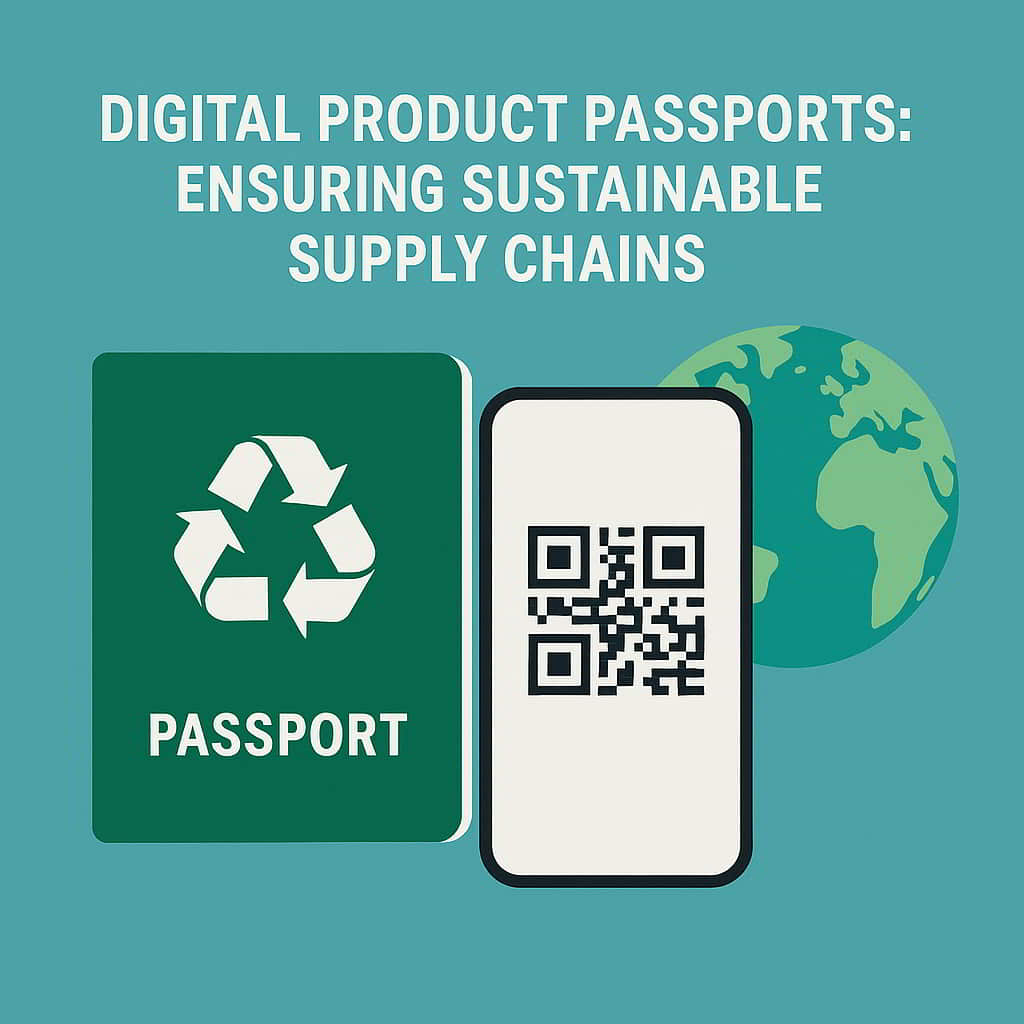What Digital Product Passports Are
Digital Product Passports, often shortened to DPPs, are structured digital records that store verified data about a product’s origin, materials, manufacturing process, and environmental impact. The concept is part of the EU Circular Economy Action Plan, designed to make supply chains more transparent and sustainable.
Each passport serves as a digital identity card for a physical item. It allows manufacturers, retailers, and consumers to access essential lifecycle information — such as recycled content, repairability, or carbon footprint — through QR codes, RFID tags, or blockchain-based identifiers.
The goal is simple: ensure that products can be traced, repaired, reused, or recycled at the end of their life, reducing waste and supporting circular business models.
Why DPPs Matter for Businesses
The EU plans to make Digital Product Passports mandatory for several sectors by 2030, including electronics, batteries, textiles, and construction materials. For companies, this is not only a compliance issue but also an opportunity to strengthen customer trust and operational efficiency.
Transparent supply chains benefit all stakeholders:
- Manufacturers gain better visibility of their materials and logistics.
- Consumers can make informed purchasing decisions.
- Regulators can verify sustainability claims more easily.
A DPP also supports certifications like ISO 14001 and B Corp, which rely on verifiable environmental data. In competitive markets, verified sustainability becomes a selling point rather than an administrative burden.
Key Components of a Digital Product Passport
Every DPP contains standardized data fields designed for interoperability across the European single market.
| Component | Description | Example Application |
|---|---|---|
| Product Identification | Unique ID or QR code linked to EU databases | Product label with QR code for instant scan |
| Material Composition | Details on raw materials, recycled content, and hazardous substances | Tracking recycled polyester in textiles |
| Manufacturing Data | Production location, date, and process details | Verifying carbon footprint per unit |
| Lifecycle Information | Instructions for repair, reuse, and recycling | Providing guidance for refurbishing electronics |
| Compliance and Certifications | Verified sustainability or safety standards | ISO 14001, CE, or Cradle to Cradle data |
| Carbon and Energy Metrics | Embedded and operational emissions | Reporting under EU taxonomy or CSRD |
This standardized approach makes it possible to automate reporting and auditing, saving time while ensuring traceability across borders.
How AI Supports Digital Product Passports
Artificial intelligence plays a crucial role in creating and maintaining accurate product passports. AI systems can automatically extract data from bills of materials, supplier records, and IoT sensors to populate DPPs. They also help detect inconsistencies or missing data points before submission.
Machine learning models can estimate lifecycle emissions, optimize material sourcing, and predict product end-of-life scenarios. In logistics, AI tools support real-time tracking, ensuring that sustainability claims match actual transport and manufacturing data.
Companies using AI-driven product lifecycle management (PLM) platforms are already better positioned to adapt to upcoming DPP requirements.
Preparing Your Business for DPP Implementation
Adapting to Digital Product Passports requires strategic preparation across departments. The transition is smoother when companies start early.
1. Map your supply chain
Identify data gaps, particularly with third-party suppliers. Ensure you can access details on materials, energy use, and production methods.
2. Standardize your data formats
DPPs rely on structured data that aligns with EU interoperability standards. Review your ERP or PLM systems for compatibility.
3. Integrate traceability tools
Technologies such as blockchain or RFID tracking simplify secure data exchange. Some companies already combine them with AI-powered analytics for automated reporting.
4. Train your teams
Sustainability officers, engineers, and compliance teams should understand how to capture and interpret environmental data.
5. Pilot projects
Start with one product line to test DPP integration before scaling it across your portfolio. Early adoption builds expertise and credibility with regulators.
The Future of Supply Chain Transparency
Digital Product Passports are reshaping how companies think about sustainability. They turn environmental responsibility into a measurable, data-driven process that enhances competitiveness.
As regulations tighten under the EU Green Deal, the businesses that act now will find themselves ahead of compliance deadlines and market expectations. A well-implemented DPP system is not just a regulatory requirement — it is the foundation of the next era of responsible and transparent commerce.
